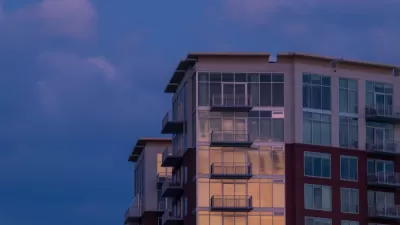Upzonings in working class neighborhoods usually provoke political opposition based on concerns about gentrification and displacement. But the new Wynwood Norte Neighborhood Revitalization District in Miami might have worked for a solution.
"Residents and property owners who banded together in the newly rechristened working-class neighborhood of Wynwood Norte have won Miami commissioners’ enthusiastic approval for an innovative plan that would tame looming gentrification by spurring development," reports Andre Viglucci.
"The Wynwood Norte Neighborhood Revitalization District, a special zoning plan approved on first reading by a 5-0 vote on Thursday, arose from a grassroots effort to reverse the historic residential enclave’s declining fortunes," adds Viglucci.
The NRD-2, as the district is also called, was created by Miami city planners based on earlier work by Wynwood Community Enhancement Association, PlusUrbia Design, and others to create the Wynwood North Community Vision Plan. The Miami City Council recognized the vision plan in November 2019, passing a resolution instructing city staff to study implementation—enter the Wynwood Norte Neighborhood Revitalization District.
The zoning changes included in the revitalization district "would allow Miami-Dade County’s housing agency, which owns several acres of underused land in the neighborhood, to expand its local stock of affordable and workforce housing," explains Viglucci.
To protect the community, "the plan aims to preserve the core and character of the neighborhood by placing stricter limits on demolitions and maintaining a low scale in residential areas," adds Viglucci.
More details on the community-led process that produced the vision plan and the revitalization district, the goals of the vision plan and revitalization district, as well as the history of planning and development in the area are included in the source article.
FULL STORY: To fight gentrification, a working-class Miami enclave wins plan to spur development

Trump Administration Could Effectively End Housing Voucher Program
Federal officials are eyeing major cuts to the Section 8 program that helps millions of low-income households pay rent.

Planetizen Federal Action Tracker
A weekly monitor of how Trump’s orders and actions are impacting planners and planning in America.

Ken Jennings Launches Transit Web Series
The Jeopardy champ wants you to ride public transit.

Rebuilding Smarter: How LA County Is Guiding Fire-Ravaged Communities Toward Resilience
Los Angeles County is leading a coordinated effort to help fire-impacted communities rebuild with resilience by providing recovery resources, promoting fire-wise design, and aligning reconstruction with broader sustainability and climate goals.

When Borders Blur: Regional Collaboration in Action
As regional challenges outgrow city boundaries, “When Borders Blur” explores how cross-jurisdictional collaboration can drive smarter, more resilient urban planning, sharing real-world lessons from thriving partnerships across North America.

Philadelphia Is Expanding its Network of Roundabouts
Roundabouts are widely shown to decrease traffic speed, reduce congestion, and improve efficiency.
Urban Design for Planners 1: Software Tools
This six-course series explores essential urban design concepts using open source software and equips planners with the tools they need to participate fully in the urban design process.
Planning for Universal Design
Learn the tools for implementing Universal Design in planning regulations.
Ada County Highway District
Clanton & Associates, Inc.
Jessamine County Fiscal Court
Institute for Housing and Urban Development Studies (IHS)
City of Grandview
Harvard GSD Executive Education
Toledo-Lucas County Plan Commissions
Salt Lake City
NYU Wagner Graduate School of Public Service





























